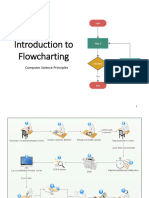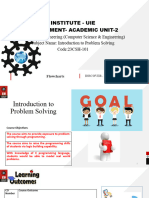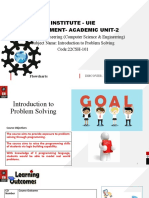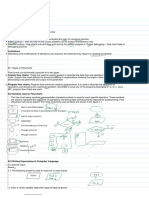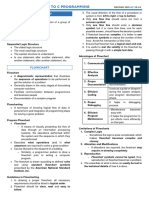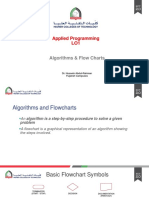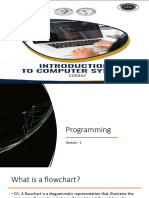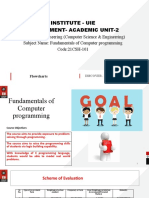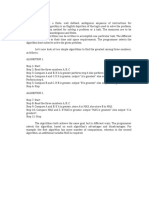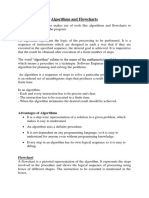0% found this document useful (0 votes)
86 views45 pagesMod 2-Flowcharting
The document discusses flowcharting including its objectives, types, symbols, advantages, limitations, and examples of applying flowcharting to sequence, selection, and repetition control structures. It provides examples of word problems and their corresponding flowcharts to illustrate each control structure.
Uploaded by
SeanPharrell18 OfficialCopyright
© © All Rights Reserved
We take content rights seriously. If you suspect this is your content, claim it here.
Available Formats
Download as PDF, TXT or read online on Scribd
0% found this document useful (0 votes)
86 views45 pagesMod 2-Flowcharting
The document discusses flowcharting including its objectives, types, symbols, advantages, limitations, and examples of applying flowcharting to sequence, selection, and repetition control structures. It provides examples of word problems and their corresponding flowcharts to illustrate each control structure.
Uploaded by
SeanPharrell18 OfficialCopyright
© © All Rights Reserved
We take content rights seriously. If you suspect this is your content, claim it here.
Available Formats
Download as PDF, TXT or read online on Scribd
/ 45




